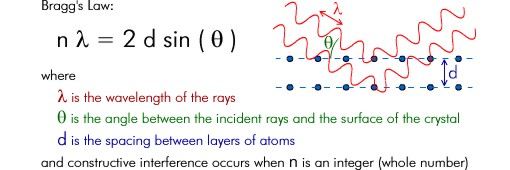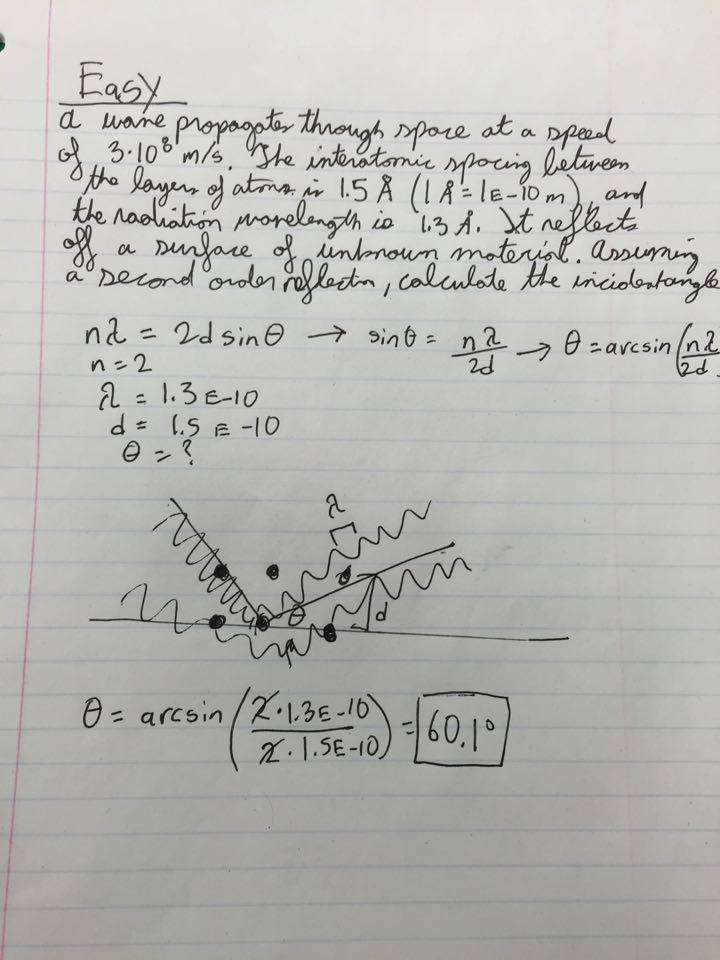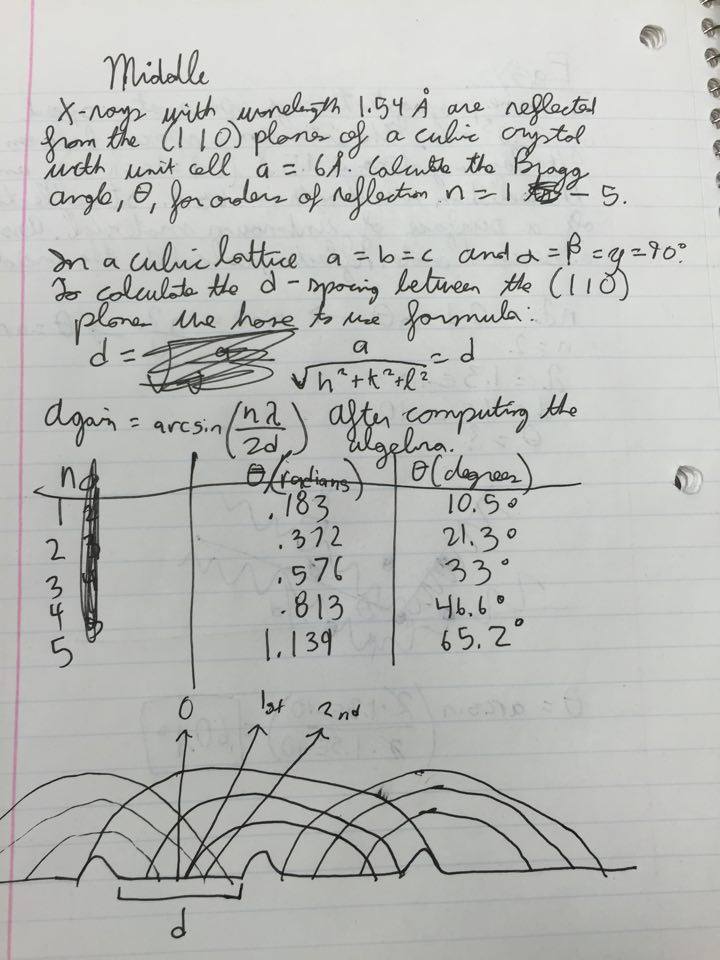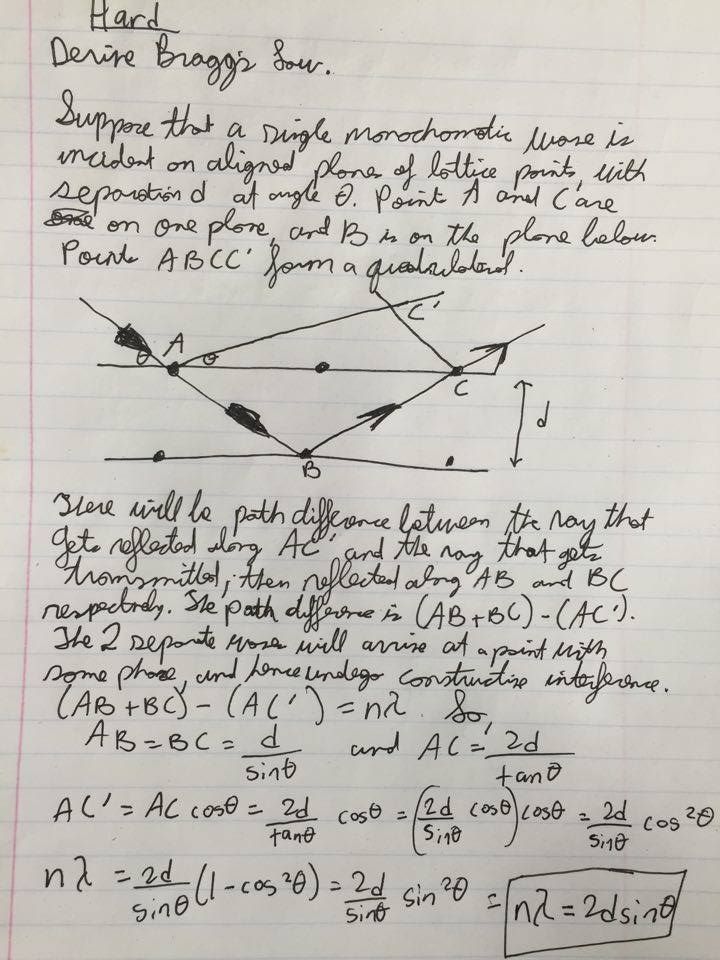Bragg's Law
Short Description of Topic
The Main Idea
Bragg's Law is a phenomenon in physics that relates the angles for coherent & incoherent scattering of crystal lattices, the wavelength of the incident wave, and the distance that the wave travels; the distance traveled by the wave depends on the separation of the layers and the angle at which the X-ray entered the material. This diffraction occurs when radiation, with wavelength comparable to atomic spacings, is scattered in a specular fashion by the atoms of a crystalline system, and undergoes constructive interference. The waves must interfere constructively in order for Bragg's Law to be valid. Also, the wave which reflected from the surface needs to have traveled a whole number of wavelengths while inside the material. The path difference between two waves undergoing interference is given by 2dsinθ, where θ is the scattering angle. Bragg's Law ultimately describes the largest angle θ such that constructive interference is at its strongest. [1]
A Mathematical Model
 [2]
n is simply an integer describing the order of the reflection.
[2]
n is simply an integer describing the order of the reflection.
Bragg's law, as stated above, can be used to obtain the lattice spacing of a particular cubic system through the following relation:
where h, k, and l are the Miller indeces of the Bragg plane. Putting it all together we have:
Examples
Simple
Middling
Difficult
Connectedness
How is this topic connected to something that you are interested in?
Electromagnetic radiation is all around us and I chose this topic after reading chapter 23 in the textbook, I did additional reading on the topics and learned that EM Radiation is related to Bragg's Law.
How is it connected to your major?
As a Materials Science & Engineering major, I have encountered this topic in one of the chapters of MSE2001. It is important for understanding crystal lattice properties.
Is there an interesting industrial application?
Bragg's Law is an important part of X-Ray Crystallography.
History
was first proposed by William Lawrence Bragg and in the early 20th century in response to their discovery that crystalline solids produced surprising patterns of reflected X-rays. Bragg (1890-1971) presented his derivation of the reflection condition at a meeting of the Cambridge Philosophical Society on 11 November 1912. Although simple, Bragg's law confirmed the existence of real particles at the atomic scale, as well as providing a powerful new tool for studying crystals in the form of X-ray and neutron diffraction. William Lawrence Bragg was 25 years old, making him then, the youngest physics Nobel laureate.
See also
Further reading
External links
References
http://www-outreach.phy.cam.ac.uk/camphy/xraydiffraction/xraydiffraction7_1.htm



